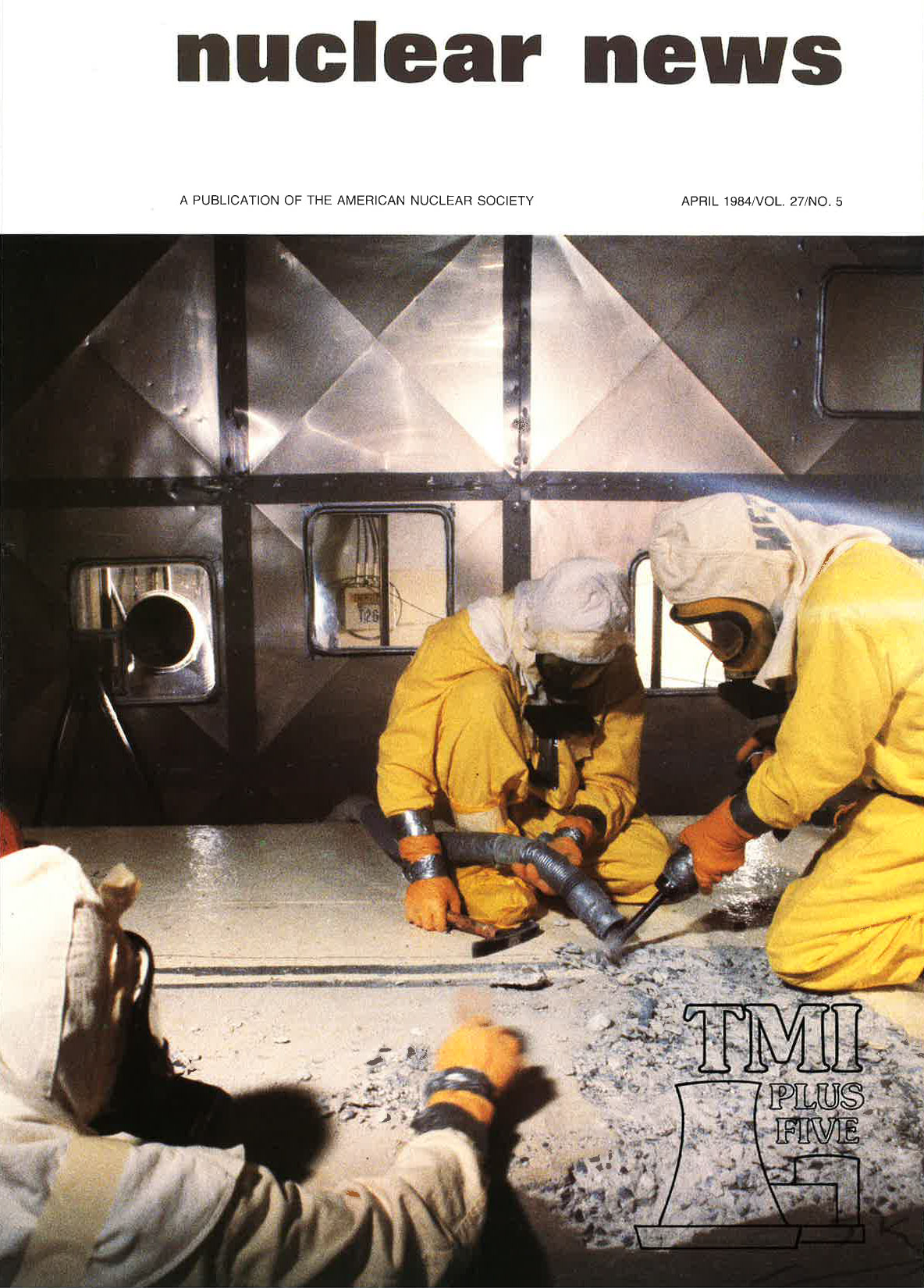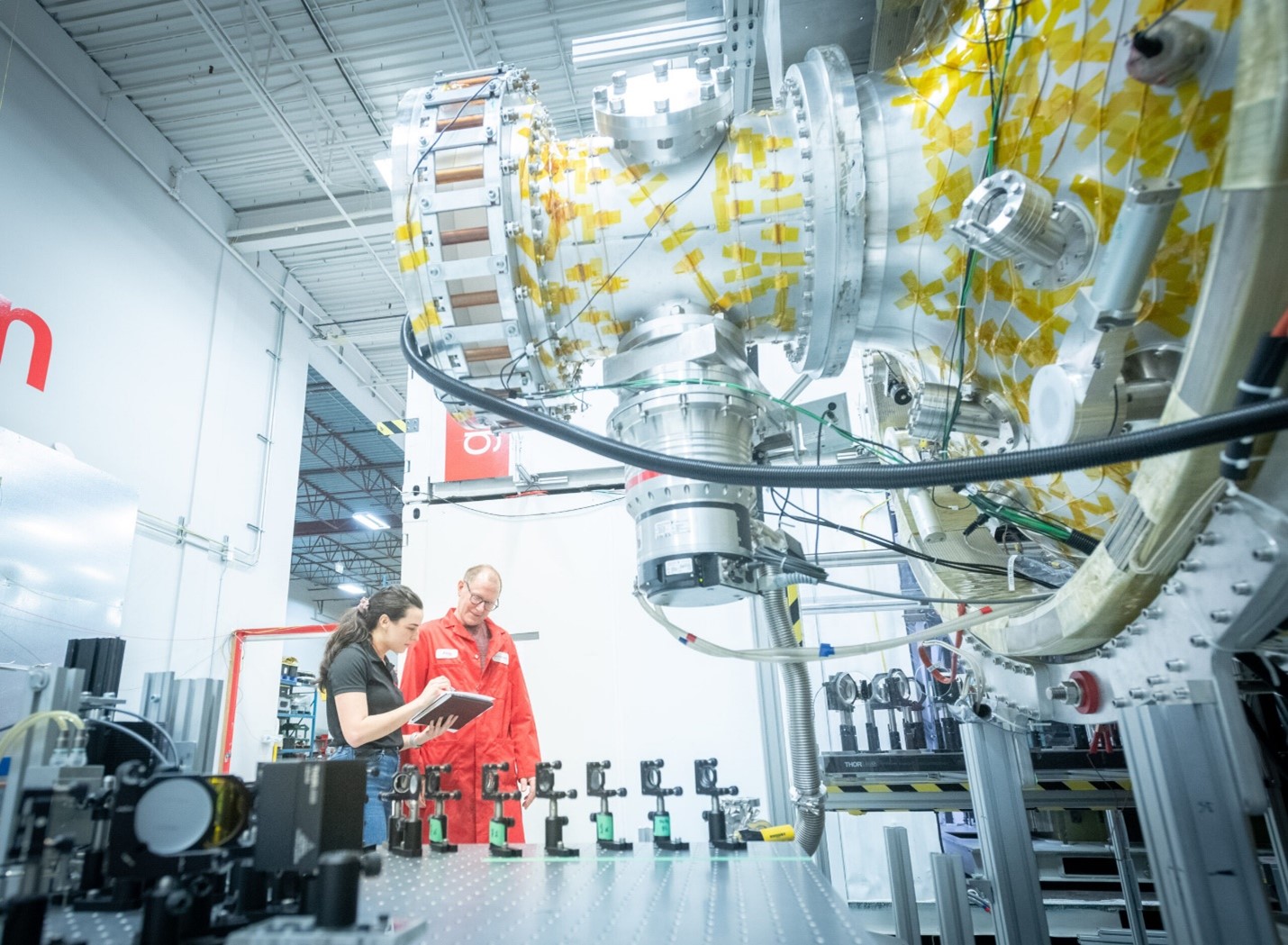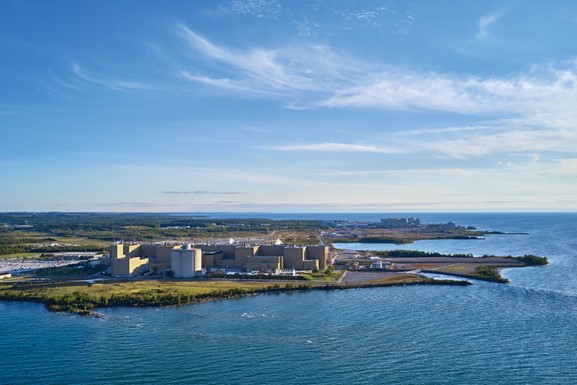The first steel ring section of the Unit 2 reactor building was installed in November 2021. (Photo: EDF Energy)
The United Kingdom’s Office for Nuclear Regulation (ONR) has granted permission for the start of bulk mechanical, electrical, and HVAC component installation work at the Hinkley Point C site in Somerset, England, where two 1,630-MWe EPRs are under construction. Thus far, most of the activity at Hinkley Point C has been in the field of civil construction.
This new phase, according to ONR, will require a workforce of up to 4,000 during peak times, including welders, pipe fitters, and electricians. The work is to be accomplished over a three-year period, with NNB Genco—the EDF Energy subsidiary set up in 2009 to build and operate Hinkley Point C—teaming up with four suppliers: Balfour Beatty Bailey, Doosan, Cavendish, and Altrad.
IAEA director general Rafael Mariano Grossi (left) and WHO director general Tedros Adhanom Ghebreyesus. (Photo: IAEA)
The International Atomic Energy Agency has launched the Rays of Hope program to tackle a severe shortage of cancer care capacity in poorer countries. The program’s initial focus will be on Africa, where people often die from the disease because of the lack of access to potentially life-saving nuclear medicine and radiotherapy, according to the IAEA.
A video on the program is available on YouTube.
SHINE’s Mo-99 production facility under construction in Janesville, Wis. (Photo: SHINE)
SHINE Europe, a nascent subsidiary of Wisconsin-based SHINE Technologies, announced Wednesday that it has secured funding to begin designing an advanced medical isotopes facility in Veendam, the Netherlands. The new facility will use the same fusion-based neutron generator system SHINE is employing at its Janesville, Wis., facility to produce medical isotopes, including molybdenum-99, which is used in diagnostic imaging.
General Fusion is aiming to operate a fusion demonstration plant in 2025. (Photo: Bruce Power/General Fusion)
Bruce Power, General Fusion, and the Nuclear Innovation Institute have signed a memorandum of understanding to evaluate the potential deployment of a fusion power plant in Ontario, including in a region on the shores of Lake Huron comprising three counties—Bruce, Grey, and Huron—that has been dubbed the Clean Energy Frontier. Together the three organizations plan to build on existing clean energy technologies and expertise in the region and lead stakeholder and public outreach activities to raise awareness of the potential benefits of fusion energy.
This image is described by the Alaska Center for Energy and Power as a conceptual layout of a generic small modular reactor or microreactor. (Image: ACEP)
Alaska Gov. Mike Dunleavy (R.) introduced “An act relating to microreactors” (SB 177) in the Alaska state legislature on February 1 that would modify existing state law on nuclear energy by specifying that microreactors are not subject to certain nuclear reactor siting and permitting regulations in Alaska. The bill defines a microreactor as an advanced nuclear fission reactor that would be capable of generating no more than 50 MWe.
A rendering of the Natrium plant. (Image: TerraPower)
Natrium, a 345-MWe sodium fast reactor with a molten salt energy storage system, was developed by TerraPower and GE Hitachi Nuclear Energy. TerraPower is planning to build the first Natrium demonstration reactor by 2028 with 50-50 cost-shared funding of about $2 billion from the Department of Energy’s Advanced Reactor Demonstration Program. And for the requisite data and testing of reactor components to support that deployment, TerraPower is looking to Japan—a country with decades of experience developing sodium fast reactor designs and testing infrastructure.
ADOPT fuel pellets developed by Westinghouse through the DOE's Accident Tolerant Fuel Program. (Photo: Westinghouse)
Westinghouse Electric Company and Southern Nuclear have agreed to a plan to install four Westinghouse lead test assemblies in Vogtle-2, a 1,169-MWe pressurized water reactor located in Waynesboro, Ga. Four lead test assemblies containing uranium enriched up to 6 percent U-235 will be loaded in Vogtle-2 in 2023, marking the first time that fuel rods with uranium enriched above 5 percent U-235 are put in use in a U.S. commercial power reactor.
HDI was issued a confirmatory order by the NRC for regulatory violations at Oyster Creek. (Photo: Exelon)
The Nuclear Regulatory Commission has issued a confirmatory order to Holtec Decommissioning International (HDI) following an alternative dispute resolution mediation session regarding security-related violations at the Oyster Creek nuclear power plant in Lacey Township, N.J. A subsidiary of Holtec International, HDI is decommissioning Oyster Creek, which permanently ceased operations in 2018.
An illustration of the two inertial confinement fusion designs reaching the burning plasma regime, as published in a recent article in Nature. (Image: LLNL)
One of the last remaining milestones in fusion research before attaining ignition and self-sustaining energy production is creating a burning plasma, where the fusion reactions themselves are the primary source of heating in the plasma. A paper published in the journal Nature on January 26 describes recent experiments at Lawrence Livermore National Laboratory’s National Ignition Facility (NIF) that have achieved a burning plasma state.
Bruce nuclear power plant in Ontario, Canada. (Photo: Bruce Power)
Bruce Power and Isogen, a partnership between Kinectrics and Framatome, have completed the installation of Isogen’s isotope production system (IPS) at Unit 7 of Bruce’s CANDU nuclear power plant in Ontario, Canada, making it the first power reactor in the world with installed capability to produce lutetium-177.
 Today’s #ThrowbackThursday post looks at the initial debate surrounding the conversion of research reactor fuel from high-enriched uranium to low-enriched uranium. An article published in the April 1984 issue of Nuclear News (available to all ANS members), titled “NRC studies HEU-to-LEU fuel conversion issue,” was written by the ANS Washington editor John Graham, and brings up several items of interest.
Today’s #ThrowbackThursday post looks at the initial debate surrounding the conversion of research reactor fuel from high-enriched uranium to low-enriched uranium. An article published in the April 1984 issue of Nuclear News (available to all ANS members), titled “NRC studies HEU-to-LEU fuel conversion issue,” was written by the ANS Washington editor John Graham, and brings up several items of interest.

















